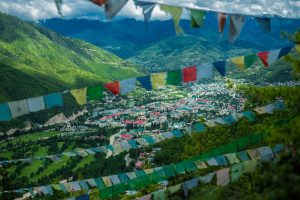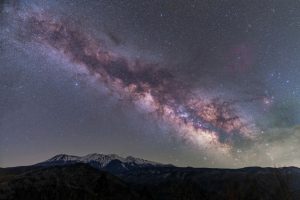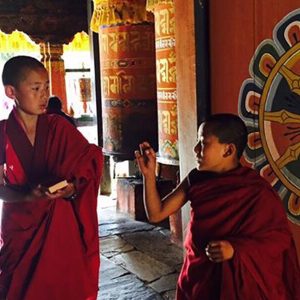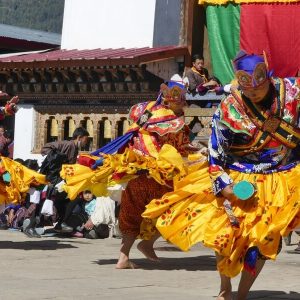Since the dawn of time, humans have looked up at the stars — to navigate oceans, mark the seasons, or simply dream about the unknown. Today, stargazing remains one of the most peaceful and inspiring hobbies, connecting modern travelers to that same ancient wonder.
In the heart of the Himalayas, Bhutan stands out as one of Asia’s best-kept secrets for night-sky lovers. High mountain valleys, thin crystal-clear air, small towns, and a deep national respect for the environment create ideal conditions for seeing the Milky Way as a luminous river flowing across the night.
With Across Bhutan, you can explore this cosmic beauty through carefully designed itineraries that combine trekking, culture, and celestial observation. In this guide, we’ll show you:
- Why Bhutan is perfect for stargazing, from its geography to its lack of light pollution,
- The best places to watch the stars, from mountain passes to hidden valleys,
- A beginner’s crash course in stargazing and astrophotography,
- The myths and beliefs that make Bhutan’s stars feel alive.
Let the journey begin — from the earthly trails of Bhutan to the infinite trails of light above.
Why Bhutan is nearly ideal for stargazing
Far from city glow and industrial night lights, Bhutan’s nights are quiet and very dark.
Much of the population lives in high mountain valleys where air is crisp, humidity is lower at night, and direct artificial lighting is sparse — perfect conditions for stargazing, astrophotography and quiet reflection under the Milky Way.
High Altitude, Clear Skies
Bhutan’s lowest point is in the Drangme Chhu valley (around 97–98 m above sea level), while its highest summit is Gangkhar Puensum at about 7,570 m — one of the highest and (officially) unclimbed peaks on Earth. These dramatic elevation differences create many high, dry observation sites.
Most tourist hubs and villages sit between roughly 1,200–3,000 m; major towns such as Paro and Thimphu are around 2,200–2,400 m, and many passes exceed 3,000 m — meaning you’ll often be observing from high, thin air with excellent seeing.
Minimal Light Pollution
Bhutan’s limited urbanization and strong environmental policies keep its skies naturally dark.
Global light-pollution maps show Bhutan as one of the darkest countries in South Asia, comparable to Nepal and Tibet, while India, Bangladesh, and eastern China appear brightly lit on the opposite end of the spectrum.
Urban glow is concentrated only around Thimphu and Paro; most rural valleys and passes remain in low-radiance zones — near-pristine night skies by global standards.
Add to this the country’s carbon-negative policy and Gross National Happiness philosophy, and you get a rare combination: development that doesn’t dim the heavens.
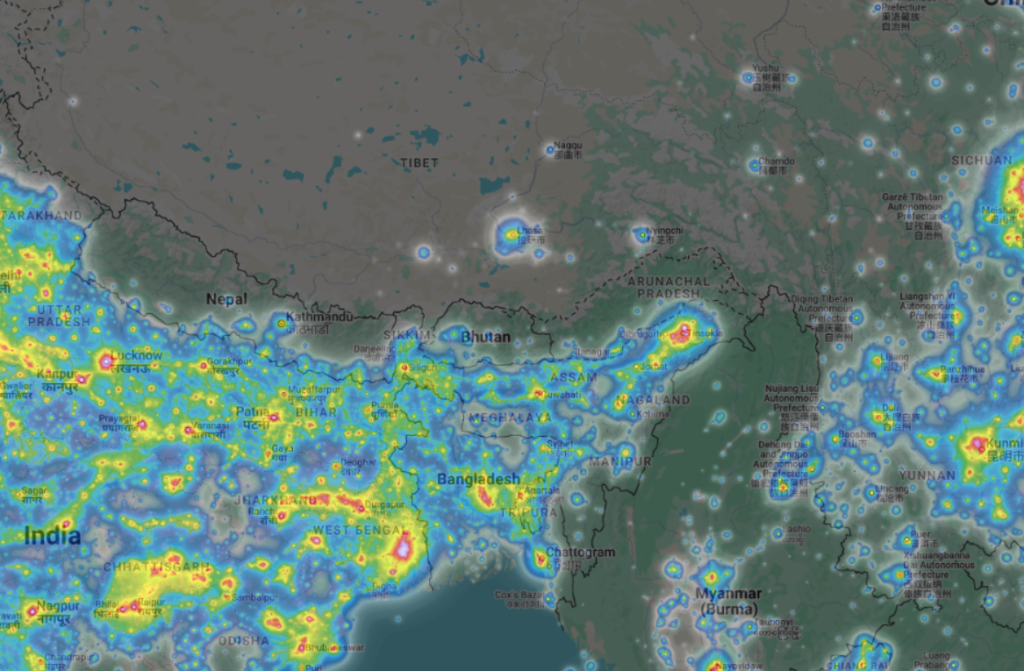
Best Places to Stargaze in Bhutan
Chele La / Chelela Pass — ~3,700–3,988 m
Between Paro and Haa, Chele La is one of Bhutan’s highest motorable passes.
At nearly 4,000 m, it offers panoramic western views — perfect for Milky Way photography from April to October. Arrive before sunset, bring layers, and face west or southwest to watch the galactic arc rise over the Haa Valley.
Phobjikha (Gangtey) Valley — ~2,900–3,000 m
Home of the black-necked cranes, Phobjikha is also a stargazer’s paradise.
The broad glacial valley, ringed by forests and dotted with few lights, sits at a sweet spot between altitude and comfort. Face southwest away from Gangtey Monastery for crystal-clear horizons and long exposures of the Milky Way’s bright center.
Bumthang — 2,800 m
Known as Bhutan’s spiritual heartland, Bumthang offers wide, sheltered valleys at moderate elevation.
You can combine temple visits by day with gentle night-sky observation — ideal for beginners or families.
Autumn nights are especially stable and still.
Dochula Pass — 3,100 m
Just an hour from Thimphu, Dochula offers sweeping views of the eastern Himalayas.
On clear winter nights, the Orion constellation and bright star Sirius glitter above the Druk Wangyal chortens — a surreal contrast between cosmic and cultural beauty.
Laya & Lunana Region — 3,800 m–4,500 m
For seasoned trekkers, northern Bhutan’s high-altitude villages deliver the ultimate dark-sky experience.
There’s zero light pollution, and you’ll often see thousands of visible stars, including faint clusters invisible elsewhere. These remote zones are accessible only on guided treks — but the reward is an almost otherworldly silence.
Crash Course for Beginners — What to bring & How to use it
Equipment & Setup for Starwatching
| Gear | Purpose / What to Look For | Tips & Best Practices |
|---|---|---|
| Red-filter flashlight / headlamp | To read maps or gear without destroying your night vision | Use a dim red light; never switch on a full white beam when observing. |
| Smartphone with stargazing app | To assist in star identification (e.g. Star Walk, SkySafari, Stellarium) | Preload offline sky maps in case you lose signal. Set location to Bhutan. |
| Binoculars (7×50, 10×50) | Good for scanning, resolving star clusters or bright nebulae | Use a tripod or brace your elbows on a rock to steady the view. |
| Small refractor telescope (e.g. 80–100 mm apo or ED refractor) | Brighter, sharper view of planets, nebulae, galaxies | A telescope with a wide-field eyepiece is ideal in a dark site. |
| Tripod + wide-angle lens camera | For astrophotography, Milky Way, constellations | Use a stable tripod. For long exposures, use 20–30s as starting point; use intervalometer or remote shutter. |
| Warm clothing, gloves, hat | Nights at altitude get cold | Dress in layers; bring extra socks/thermal underlayers. |
Starwatching Techniques, Field Steps & Tips
- Allow Time to Adapt — Give your eyes ~20–30 minutes to fully adapt to the dark. Avoid looking at bright screens or nearby lights.
- Orient Yourself First — Use cardinal directions (north, south).
- Find the Big Dipper (Ursa Major), which points to Polaris / North Star.
- In winter, locate Orion’s Belt — three aligned stars in the southern sky.
- Trace from bright stars to adjacent constellations (e.g. Betelgeuse, Sirius, Aldebaran)
- Scan in Sections — Start with broad sky sweep, then fix on smaller patches to pick out faint clusters or nebulae.
- Use “averted vision” — looking slightly to the side of a faint object (not directly at it) often helps it appear.
- Identify Planets & Satellites — Planets appear brighter, steadier (no twinkling). Satellites may cross the sky in a short time.
- Take Notes or Sketch — Even basic sketches or notes (“three stars forming a triangle just above the ridge”) helps memory and orientation.
- Photographing the Milky Way / Constellations:
- Use wide-angle lens (14–24 mm), f/2.8 or faster.
- Start with 20–30 s exposures; adjust ISO (1600–6400 depending on noise)
- Use “500 rule” (500 ÷ focal length) as a rough maximum shutter time to avoid star trails
- Take dark frames (same exposure with lens cap) to subtract sensor noise
- Stack multiple frames (e.g. with software like DeepSkyStacker) to improve signal-to-noise
- Manage Dew / Condensation — Use dew heaters or wrap a small hand warmer around eyepieces.
- Safety — Always camp or observe with a partner, especially in remote areas. Be aware of local wildlife, terrain hazards, and weather.
What You Can See in Bhutan’s Skies, Season by Season
- Autumn (Sept–Nov): Clearest skies for stargazing — Milky Way core becomes visible later at night.
- Winter (Dec–Feb): Very clear, crisp nights — Orion and winter clusters are easy to spot.
- Spring (Mar–May): Great balance of mild days and dark nights; bright planets often visible.
- Monsoon (Jun–Aug): Cloud and rain make stargazing patchy; higher elevation treks can still produce clear windows.
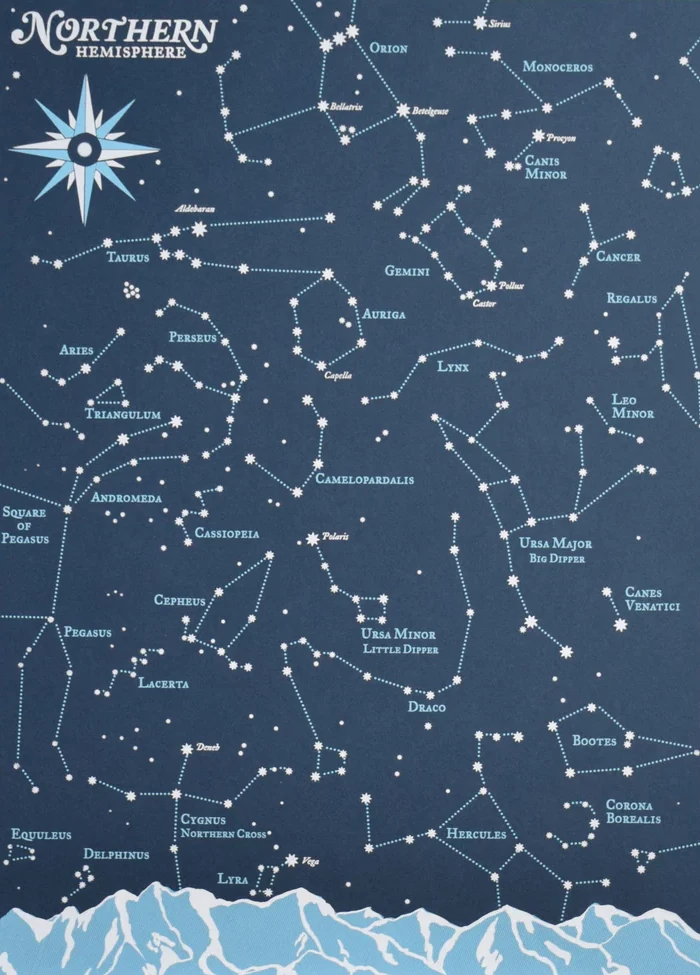
Bhutans’s Local Beliefs & Star Stories
Stargazing in Bhutan is not only a scientific pastime: the night sky sits alongside living traditions.
- Astrology as public life: Pangri Zampa (Pangrizampa) Monastery just outside Thimphu houses Bhutan’s traditional college of astrology; astrologers there still compute official calendars and auspicious dates used by families and the state. The interplay between astrology and daily life gives stargazing a social and ritual context in Bhutan.
- Thruebab — “Descent of Blessed Water”: On Thruebab (Blessed Rainy Day, around Sept 23), astrologers pick auspicious hours for ritual ablutions and say certain celestial configurations bless waters on earth. For a culturally rich evening, some families arrange ritual outdoor water offerings timed to astrologer recommendations — a touching contrast to western star-parties. Use this anecdote as a narrative hook: “locals still time certain purification baths to horoscope moments — the sky is not just spectacle but a participant.”
- Stories of sky-messengers: In places such as Phobjikha, cranes and birds are woven into sky mythology — the sight of a crane circling a monastery at dusk is often told as an ancestor’s messenger returning from the heavens. These small tales create atmosphere when you describe an evening of quiet waiting under the stars.
Common Myths & Misconceptions in Stargazing
Even among seasoned travelers, misconceptions about the night sky are common. Here are a few myths to leave behind as you gaze upward in Bhutan:
- Myth: Polaris is the brightest star in the sky.
→ Fact: Polaris is famous for marking true north, not for brightness. The brightest star is Sirius, in the constellation Canis Major, visible in Bhutan’s winter sky. - Myth: You need a telescope to enjoy stargazing.
→ Fact: The human eye and a good pair of binoculars reveal hundreds of stars, clusters, and even galaxies under Bhutan’s dark sky. - Myth: Stars twinkle because they move or change brightness.
→ Fact: Twinkling (scintillation) happens because Earth’s atmosphere bends light unevenly, an effect stronger at lower altitudes — much weaker in Bhutan’s thin, high mountain air. - Myth: The same stars are visible year-round.
→ Fact: Earth’s orbit changes our view of the sky seasonally. That’s why Orion fades by late spring, while Scorpius and Sagittarius rise in summer. - Myth: Shooting stars are stars.
→ Fact: They’re meteors, small bits of rock burning up in the atmosphere — and Bhutan’s dark sky gives you an excellent chance to spot them, especially during the Perseids (August) and Geminids (December).
Organize your star gazing trip with Across Bhutan
Ready to watch the Milky Way rise above Himalayan peaks?
Across Bhutan designs personalized stargazing and trekking tours in Bhutan, combining adventure, local folklore, and quiet nights under Asia’s darkest skies.
Whether you’re a casual sky-watcher or a passionate astrophotographer, our guides know where to find the clearest horizons, the safest routes, and the warmest tea at midnight.

